decoding kitten and cat behavior
Get to know your kitten, get to know your cat
Kittens start displaying cat behaviors from the very start (or maybe it’s the other way around — and cats display kitten behaviors their entire life!). Either way, kittens and cats have their own special ways of showing they’re hungry, happy, playful, mad, and more. Understanding cat behavior can help you appreciate your own kitty’s special nature. And it can really help to know when your cat’s body language is saying, “Hey! I need to see the vet.”
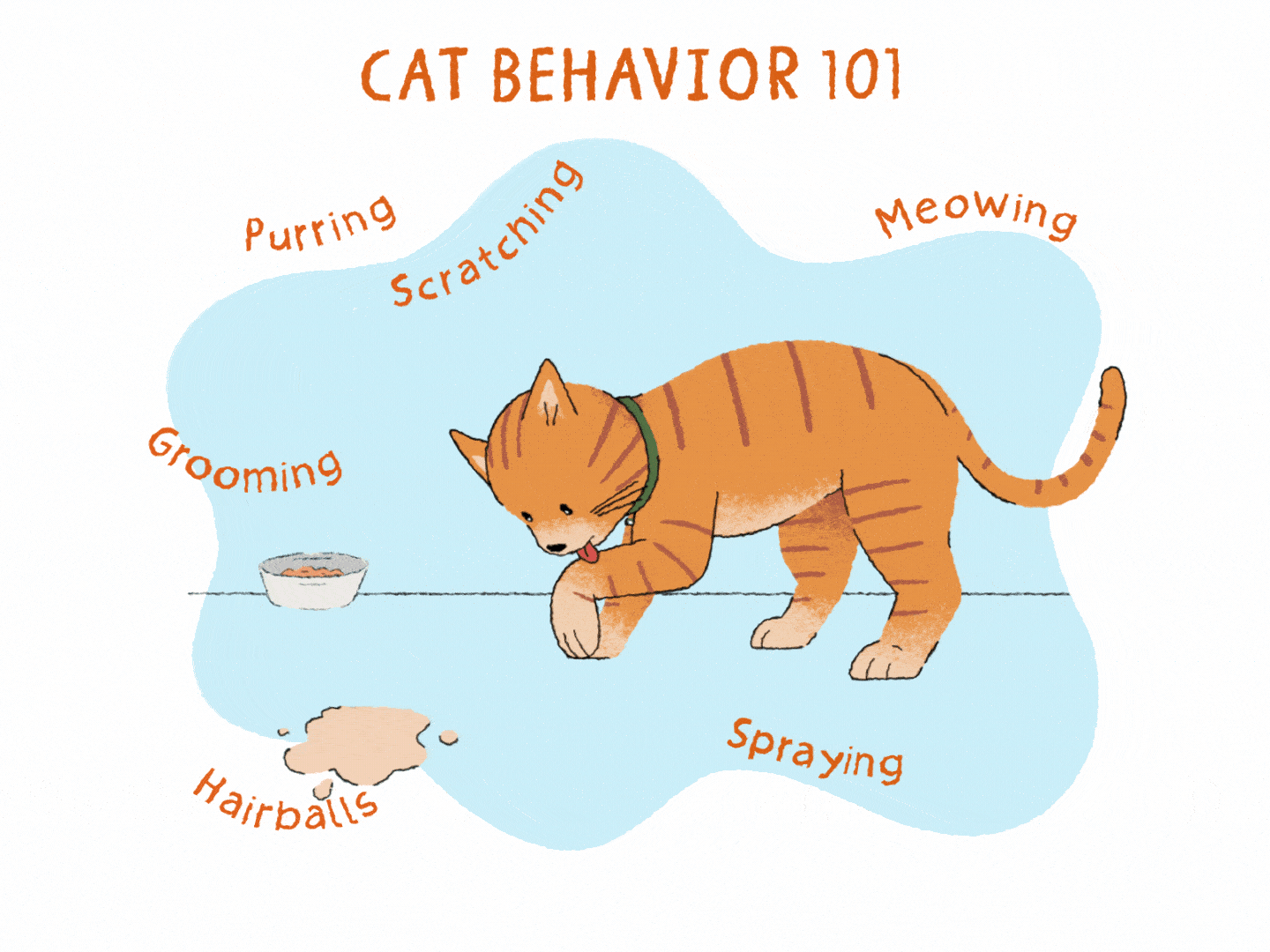
Cats know you have voices for dinnertime, playing, and petting — and a whole different one when you see them scratching furniture or whapping stuff off tables.
Why do cats purr? Why does my cat knead my lap?
Purring, kneading, and slow eye blinks can all show cat comfort.
- Purring is a special vibration from cords in your cat’s larynx. Some cats may purr under stress, but purring is usually a sign of relaxation. Kitty purrs can range from a subtle thrum to a deep, full-throated motorboat roar, depending on the cat.
- Another tip-off for cat comfort levels is slow eye blinks. Give slow blinks back, and you may be rewarded by a “bunting,” which is when your cat rubs their forehead and side of their face against you to mark you as their own.
- Kneading, or “making biscuits,” with their front feet is the same massaging motion that kittens use to get yummy milk from their mothers. If your cat uses their claws when they knead, try clipping their nails. See more about trimming cat nails
- Cats that bundle up in a little loaf, with their tail wrapped around their body, are usually in a fine mood. Same with a cat that approaches you with their tail up and curved. Run your hand from their heads to their rump, and your cat may stretch into a playful “bow” of appreciation and come back for more.
- A cat that rolls over on their back is showing a sense of security. But proceed with caution — try to rub that furry tummy and you’ll likely get scratched.
Cat playtime means pouncing, chasing, and hunting
Most cats have a fierce hunting instinct. Even your indoor kitty will probably get a thrill out of chasing, pouncing, and mauling their toys. (Help keep your cat safe with vet-approved playthings. You don’t want them choking on their “prey.”)
- Want to know if your cat is in the mood for playtime? Look for a tail that is idly twitching at the tip, or one that is curved up and over their back.
- Once you pull out the toy, see if your cat’s ears and tail perk up. To stalk their target, they’ll crouch, eyes dilated, tail switching from side to side — until they launch themselves and pounce.
- Some cats are more active at night. Help keep things quieter by providing lots of play during daylight.
- Always keep in mind that your cat has teeth and claws and may nip or accidentally scratch you during playtime. Try to keep nails trimmed. And if your kitten nips you, stop the fun for a little while, then switch to a safer-distance toy, like a feather teaser.
What is my cat saying when they meow?
Cats seldom converse with other cats. So if your cat mews at you, it’s probably because they get results! Here’s a quick rundown of basic “cat-ese.”
- Attention-seeking meows can be short and high-pitched, as in “Yes yes feed me yes yes.” A softer, pleading meow, or even a very quiet or “silent” mew, can mean that they want your attention now, please.
- A “trilling” meow is when your cat meows and purrs at the same time, often during a petting session or when rolling in the sun. Some cats “chirp” or make a “chattering” noise when they see potential prey out the window.
- Drawn out, wailing meows can mean “Help me.” Pay attention to kitty wails, because they can mean anything from “Why is dinner late?!” to “Help! I’m hurt!”
- Yowling is a persistent, repeated call that often means a cat is in heat and looking for company. On the other hand, screeching — which starts with hissing and growling, then builds up to a high-pitched shriek — definitely means “Back off!”
How can I tell when my cat is mad? How do cats act when they’re hurt?
If you spot the following signs, back off. All cats have moods, and if your friendly feline is suddenly withdrawn, or lashes out when you try to engage, it’s a sign they need some space. But pay attention — if this behavior lasts more than a little while, it can also mean that your kittyBAE is sick or hurt and needs veterinary care.
- A cat that is stiff-legged with their head down is not playing. Watch for an angry, unblinking glare — cats don’t typically make full eye contact unless they’re mad.
- An angry cat will put their ears back and hiss, showing their fangs. This may be paired with a low, deep-throated growl.
- Cats poof out their fur and tail when they’re frightened. Many a curious dog has ignored these signs and gotten a furious swat for their troubles.
- If your cat is otherwise calm, watch their tail. If the entire tail is twitching or lashing, wait for a better time to cuddle.
Cats are naturally nosy, with a knack for getting into things, knocking stuff off counters, and walking on keyboards. Being attuned to your cat — and cat-proofing your house — can make these encounters funny, rather than dangerous. See tips on cat-proofing your house
All about grooming, shedding, hairballs, and butt licking
Cats can spend hours grooming themselves with their rough little tongues in order to keep their coats clean and moisturized. In fact, the only activity that takes up more of their day is — you guessed it — sleeping.
- Friendly cats will often groom each other, so don’t be surprised if your cat thinks you deserve a few loving (if sandpapery) licks. Cats also groom as a way to regain composure, like after a hissing battle or a less-than-graceful dismount from the sofa. Plus, cat tongues function as a highly effective toilet paper.
- Hairballs are a natural side effect of grooming. Your cat can’t avoid eating their own hair as they lick and tidy their fur. Once the fur is in their gullet, your cat will either puke it up (loudly and urgently), or poop it out. If they don’t, it could create an intestinal blockage. This can be really dangerous for your cat, so contact your veterinary team if you spot ongoing gagging, lethargy, and diarrhea.
- Both long-haired and short-haired cats shed, and both get hairballs. Help out your cat with regular brushing sessions to keep down the hair.
Why is my kitten sleeping so much? How much sleep is normal for a cat?
Cats and kittens sleep a lot, probably because their ancestors needed to rest up for stalking prey. Kittens are the sleepytime champions, typically clocking in at 15-20 hours a day. Even grown cats can sleep up to 16 hours a day, although many need less. Changes in sleep patterns are always worth mentioning to your vet. Lethargy in particular can be a danger sign for multiple health conditions.
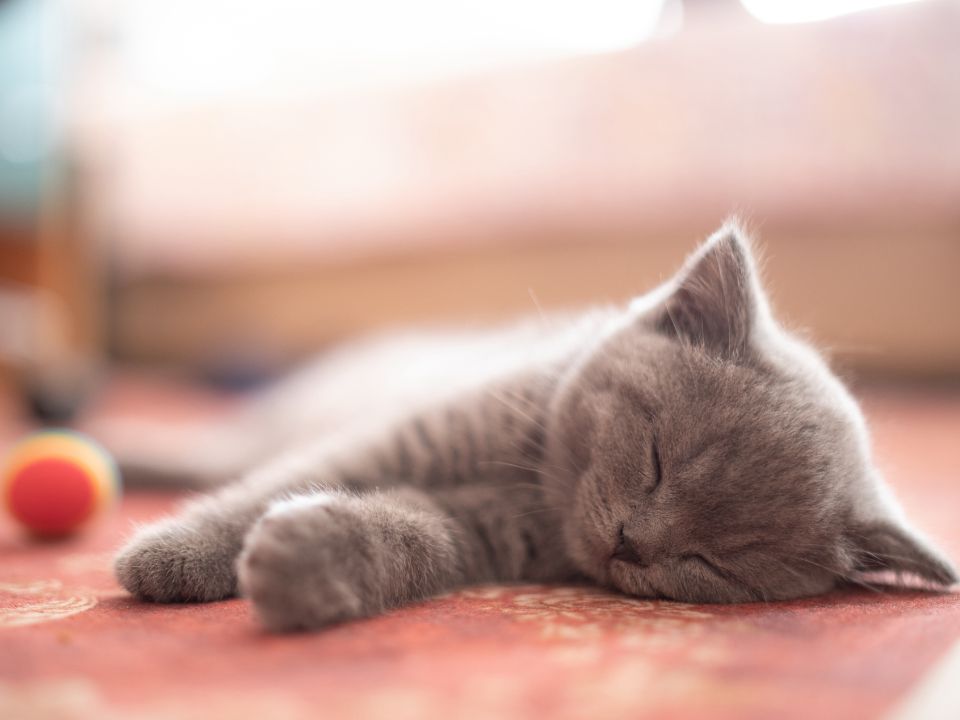
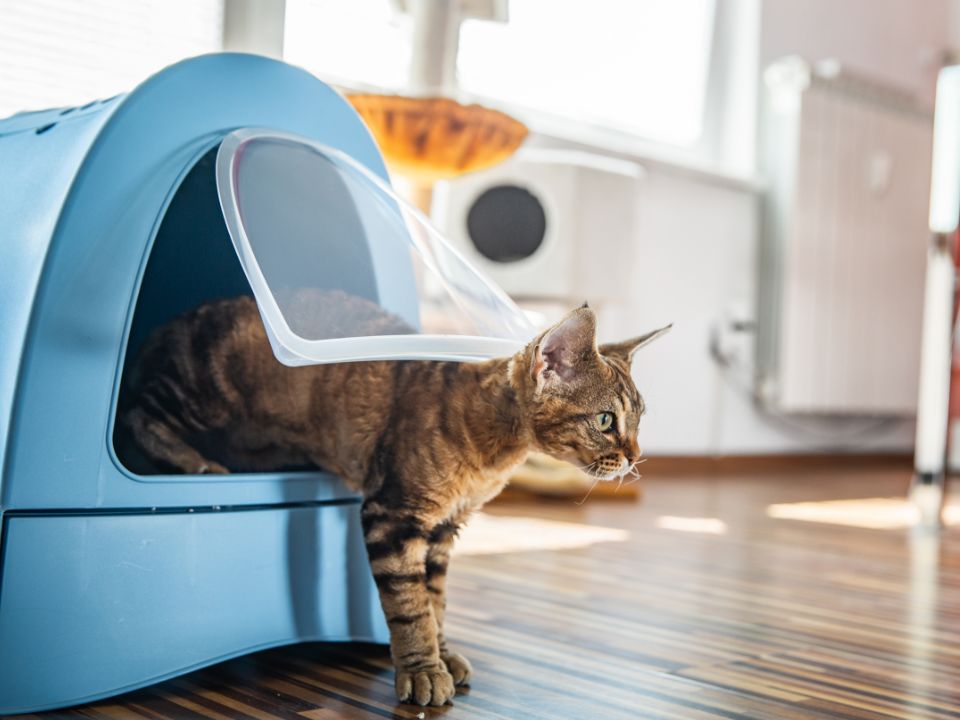
Why do cats like litter boxes?
Cats have very strong-smelling poop and pee, so many cats prefer to discreetly bury their waste to avoid attracting predators. This is one reason why they prefer clean kitty litter. If they’re instinctively trying to hide their smell, the last thing they need is a box that stink-screams “Pooping cat found here!” See more about litter boxes
How can I stop my cat from spraying and marking?
Some cats — usually non-neutered males — use their urine to mark their territory. Cats may also skip the litter box when they’re stressed, anxious, or ill. Your first step is to rule out (or treat) any underlying illness, like a urinary tract infection. If that’s not the issue, your veterinary team may recommend pheromones, a return to familiar home routines, or other helpful measures to help calm your cat. See more about helping cats with stress
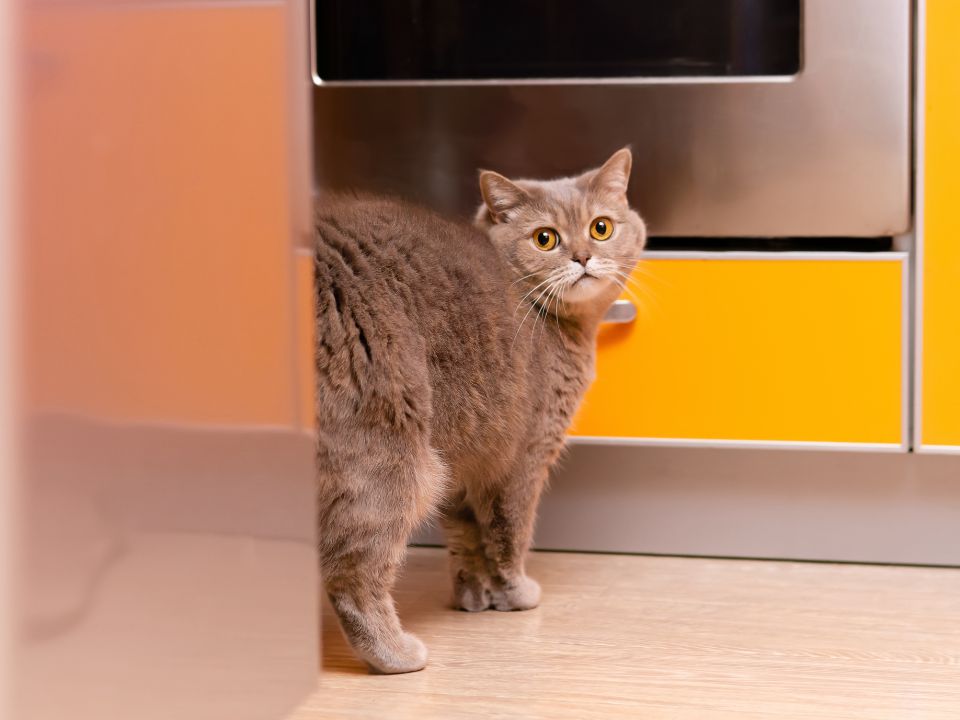
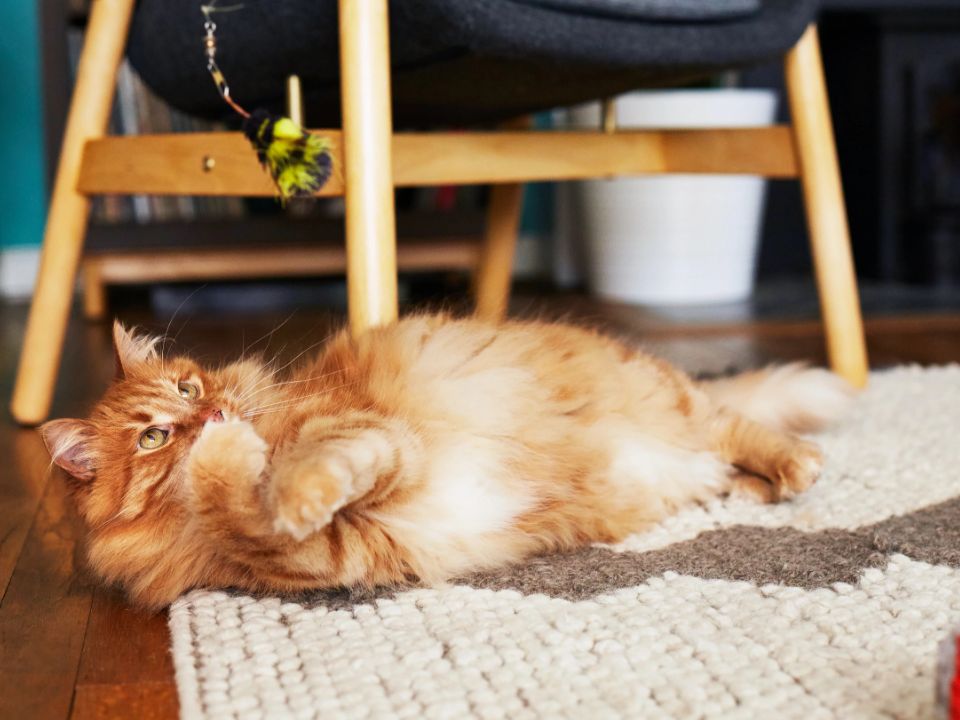
Why is my cat scratching the furniture?
Scratching is a natural cat behavior that helps your kitty keep their nails sharp, shed old claws, stretch out muscles, and mark territory. A good scratching post (or two, or three) designed just for cats can help keep their claws off your furniture. When your cat scratches the post, reward them immediately with petting and treats. You can also try laying aluminum foil on places cats shouldn’t scratch, since those feel icky on kitty feet.
How do I keep my cat out of high places?
Cats have an uncanny ability to get up high, probably because it’s an advantage for hunting or hiding. First, make sure your home is properly cat-proofed to avoid dangerous falling objects. We also recommend enticing your cat with a cat tree or cat perch. Place your tree someplace warm, with a good view, for feline snoozing and surveillance.
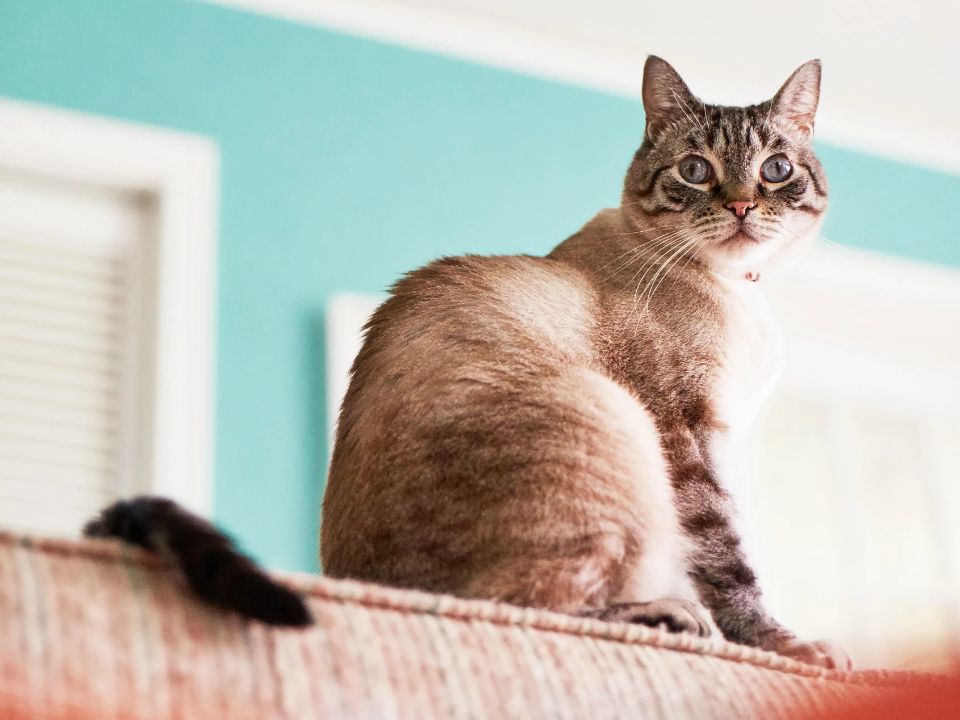
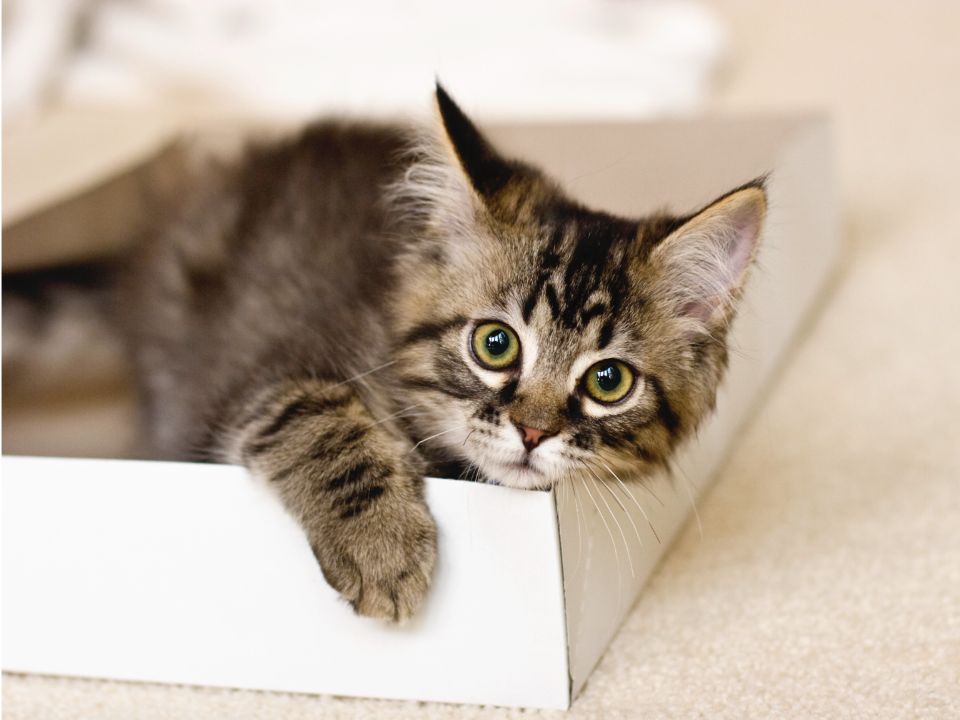
Why do cats like boxes? Why is my cat in the bathtub?
Cats love getting into boxes, dry bathtubs (although many a cat has jumped into a full bathtub by mistake), and open paper bags. There are a bunch of theories as to why, but no real answers. In the meantime, make sure those places are safe for your cat. Cut the handles on paper bags. Make sure your cat can get out of their box. And try to make sure your bathtub rim isn’t so slippery that your cat can fall and hurt themselves.
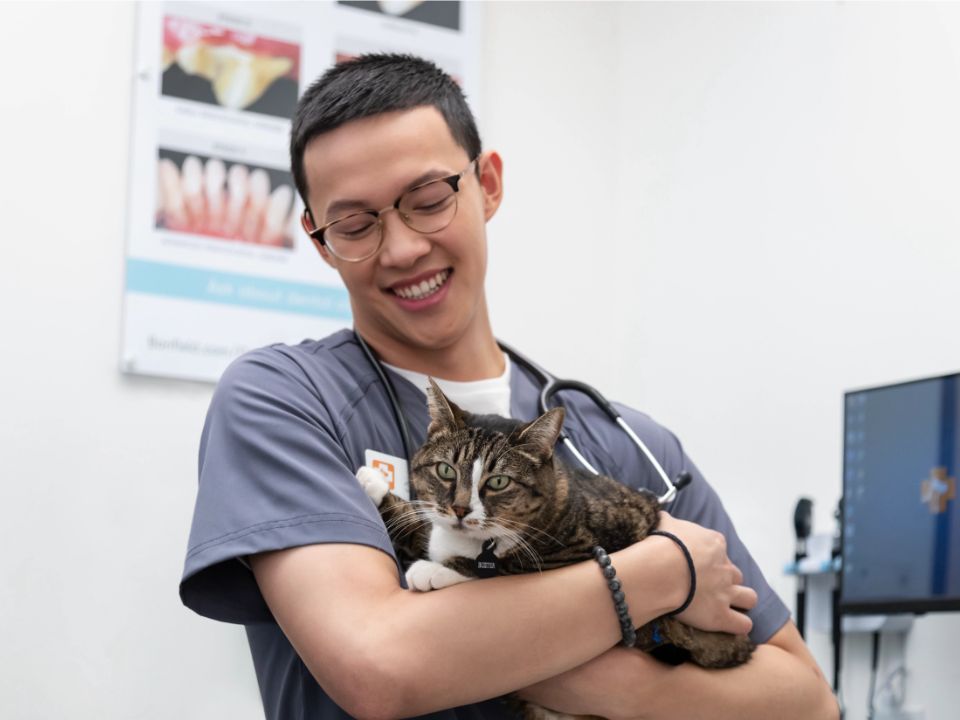
How Banfield can help
A cat that is suddenly showing new behaviors — like being weirdly tired, no longer grooming, missing the litterbox, or being angry and withdrawn — is often a cat that needs veterinary attention. You know your cat best, which makes you their best advocate for their health and wellbeing. If you have any concerns, please reach out to your veterinary team. We’ll work with you to try to identify issues and help treat your cat.
 Mites and mange
Mites and mange Podcast - Not Just Fluff
Podcast - Not Just Fluff
